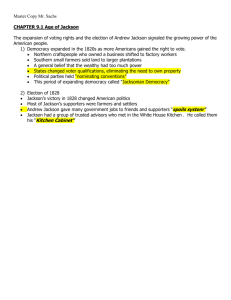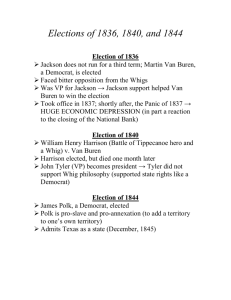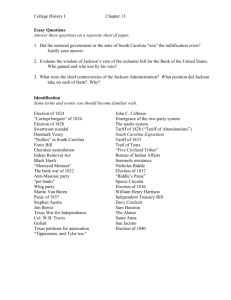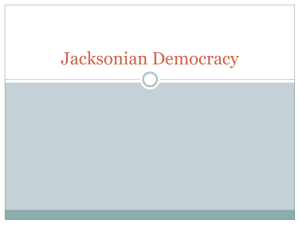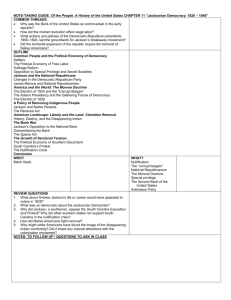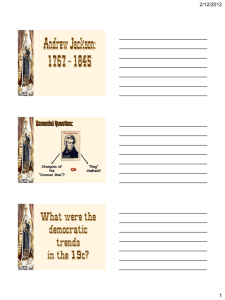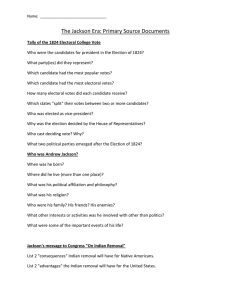Learning Objectives:
advertisement
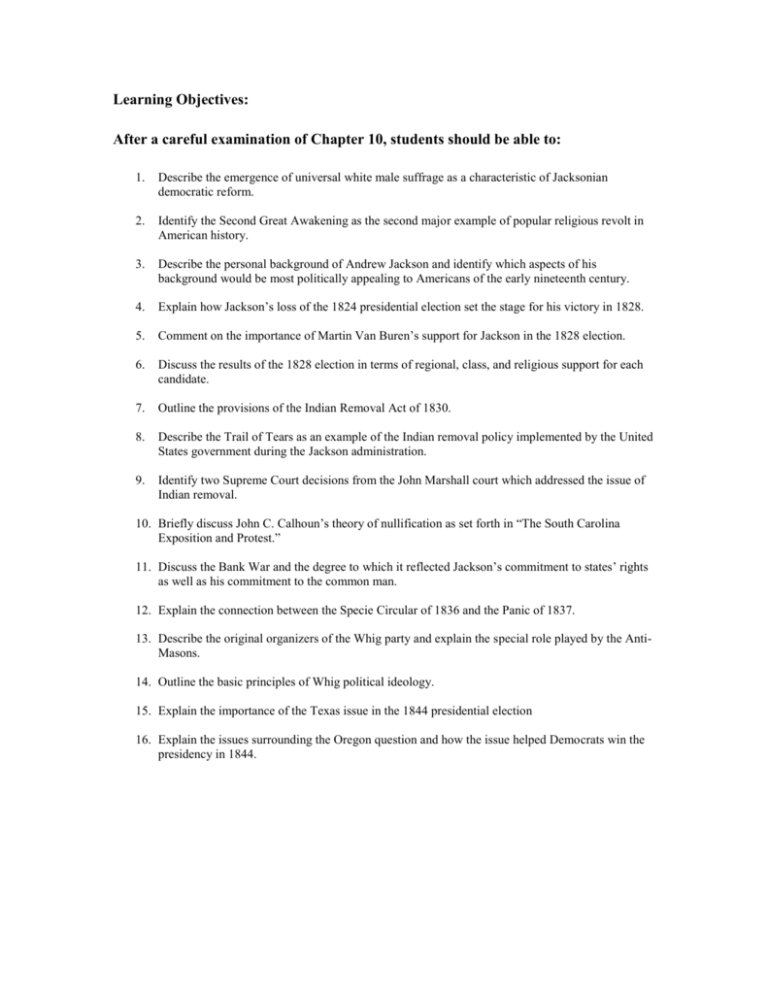
Learning Objectives: After a careful examination of Chapter 10, students should be able to: 1. Describe the emergence of universal white male suffrage as a characteristic of Jacksonian democratic reform. 2. Identify the Second Great Awakening as the second major example of popular religious revolt in American history. 3. Describe the personal background of Andrew Jackson and identify which aspects of his background would be most politically appealing to Americans of the early nineteenth century. 4. Explain how Jackson’s loss of the 1824 presidential election set the stage for his victory in 1828. 5. Comment on the importance of Martin Van Buren’s support for Jackson in the 1828 election. 6. Discuss the results of the 1828 election in terms of regional, class, and religious support for each candidate. 7. Outline the provisions of the Indian Removal Act of 1830. 8. Describe the Trail of Tears as an example of the Indian removal policy implemented by the United States government during the Jackson administration. 9. Identify two Supreme Court decisions from the John Marshall court which addressed the issue of Indian removal. 10. Briefly discuss John C. Calhoun’s theory of nullification as set forth in “The South Carolina Exposition and Protest.” 11. Discuss the Bank War and the degree to which it reflected Jackson’s commitment to states’ rights as well as his commitment to the common man. 12. Explain the connection between the Specie Circular of 1836 and the Panic of 1837. 13. Describe the original organizers of the Whig party and explain the special role played by the AntiMasons. 14. Outline the basic principles of Whig political ideology. 15. Explain the importance of the Texas issue in the 1844 presidential election 16. Explain the issues surrounding the Oregon question and how the issue helped Democrats win the presidency in 1844.

